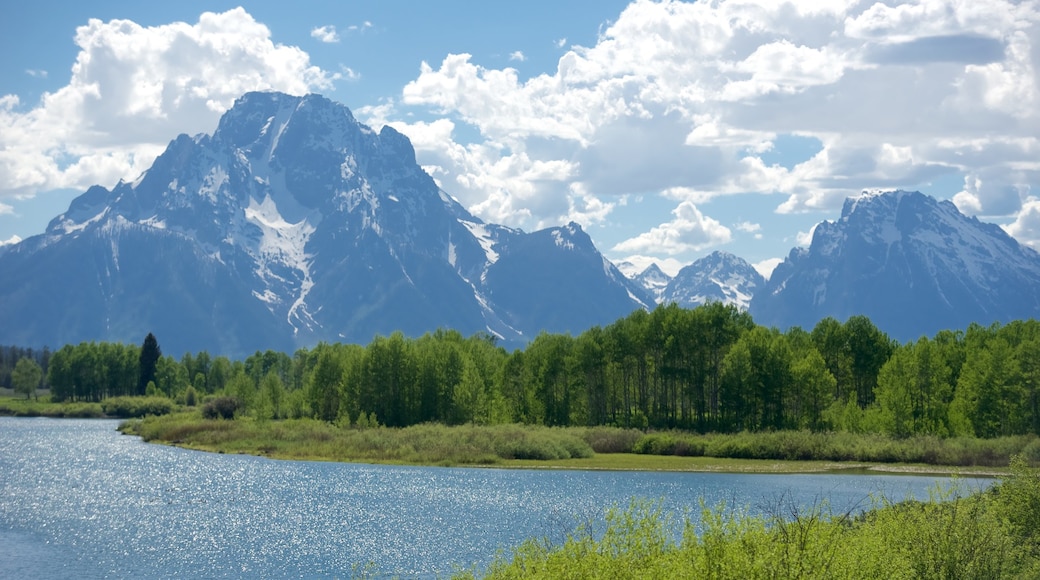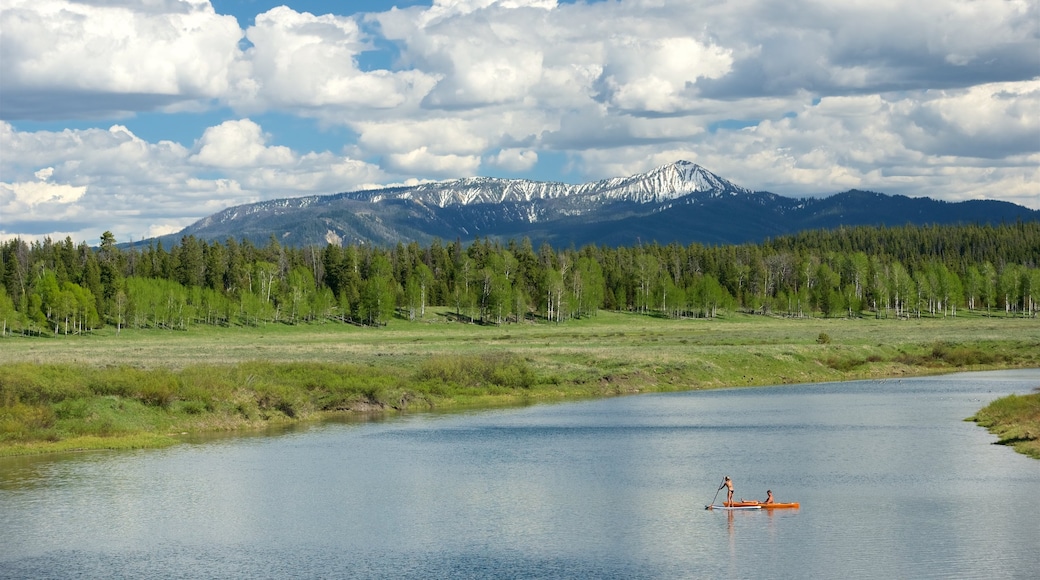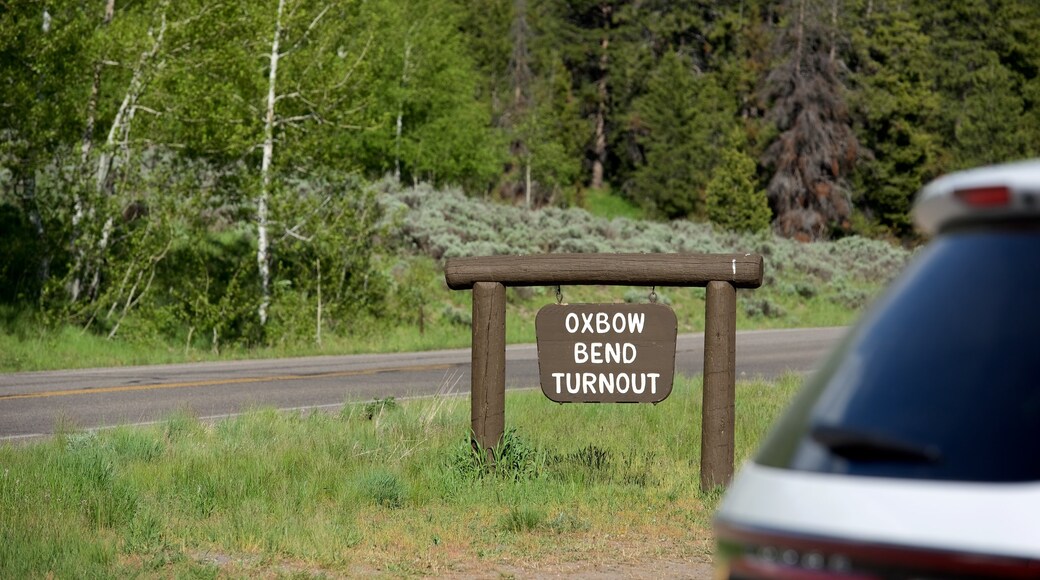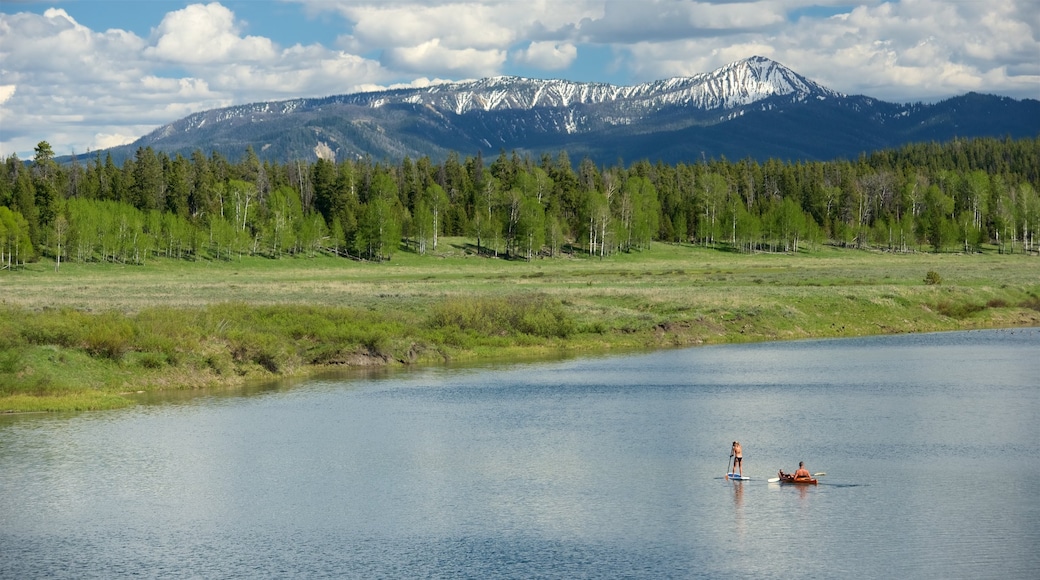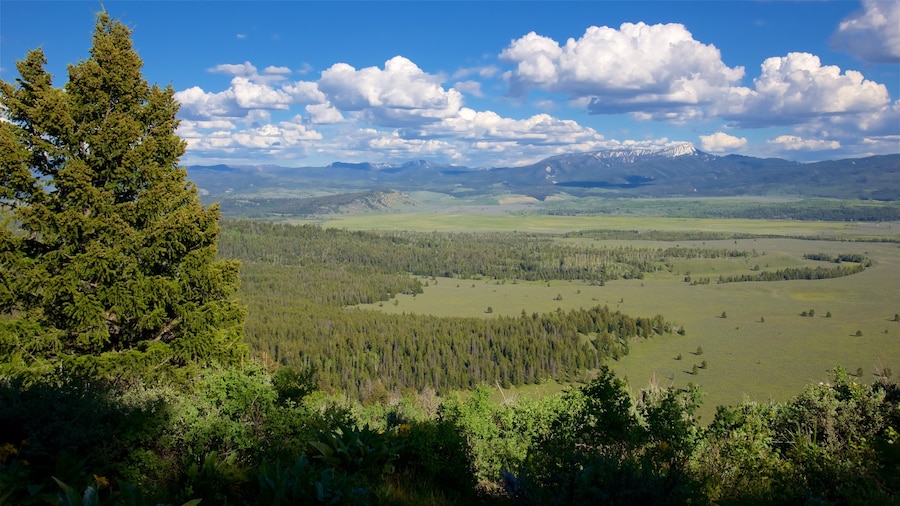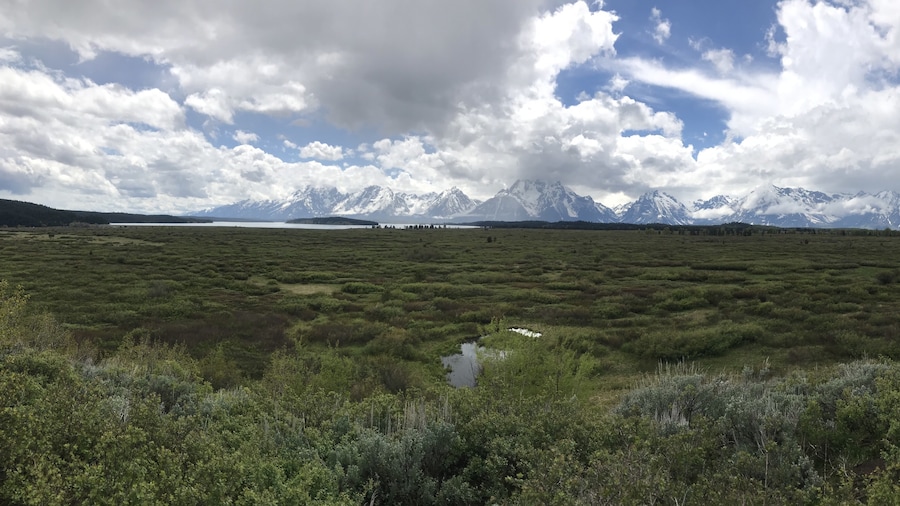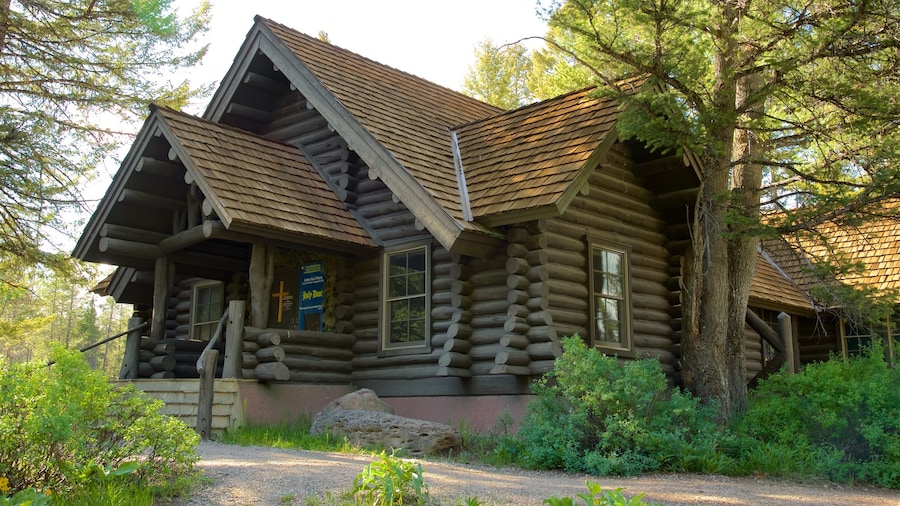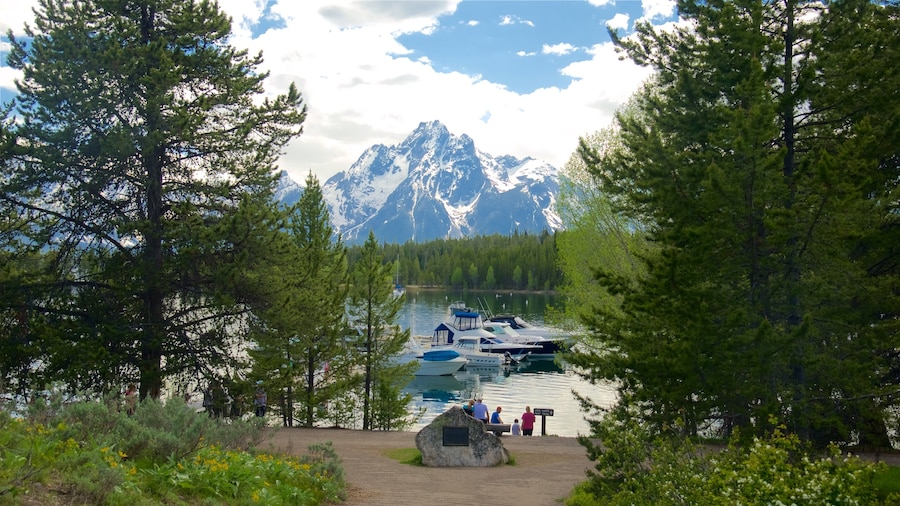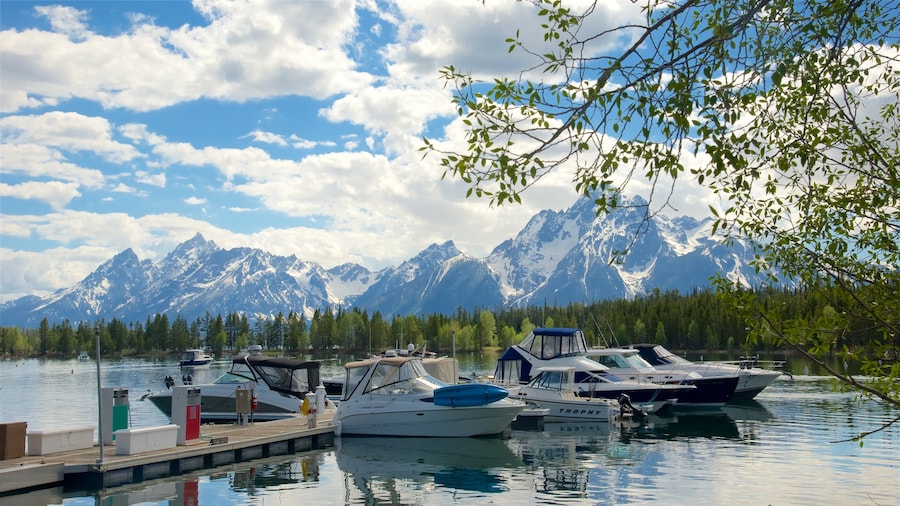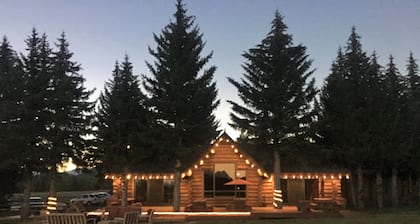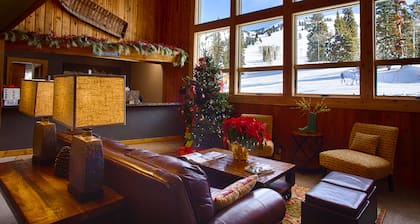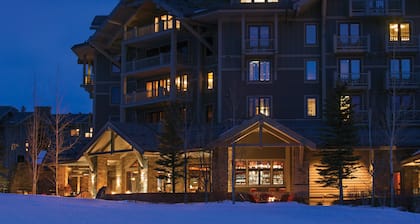Oxbow Bend is one of the most visually impressive places in Grand Teton National Park. Marvel as conifer forests and mountain peaks reflect dreamily in the tranquil water. Spot animals roaming along the riverbanks and flying above the treetops. Oxbow Bend is a wide and shallow horseshoe-shaped curve in the Snake River formed by the gradual erosion of the river’s banks.
Visitors flock to this viewpoint to enjoy the uninterrupted views of 12,605-foot-tall (3,842-meter) Mount Moran. On clear and sunny days, the mountain and its surrounding forest-covered valley mirror elegantly in the water to create an iconic image of the national park. Join the photography enthusiasts who line up to snap envy-inducing shots. Check the park’s newsletter for tips for taking the best photos.
The slow-flowing water of the bend creates a natural habitat for fish species, including cutthroat trout. The fish are prey for birdlife such as eagles, ospreys, pelicans and swans. Spot elk and moose grazing on the riverbanks and river otters romping in and out of the water. Be alert for sightings of grizzly bears and wolves, too.
A relaxing yet exciting way to experience this region of Grand Teton is to paddle around the bend on a rented canoe. Be amazed by the solitude as you cruise alongside the animals that call the national park their home. Rent canoes or kayaks from outfitters located in Jackson and Moose.
The viewpoint is less than a 10-minute drive from the Moran Entrance Station and a 15-minute drive from Colter Bay Village. Park in a turnout off the main road. Mount Moran is visible for almost the entire journey toward Colter Bay Village.
Oxbow Bend is accessible year-round. Come in winter, when snow and ice cover the mountains, river and valleys. Late September is a great time to witness the vivid orange, red and yellow hues of the fall foliage. Early in the morning is often the best time for watching and photographing wildlife.
